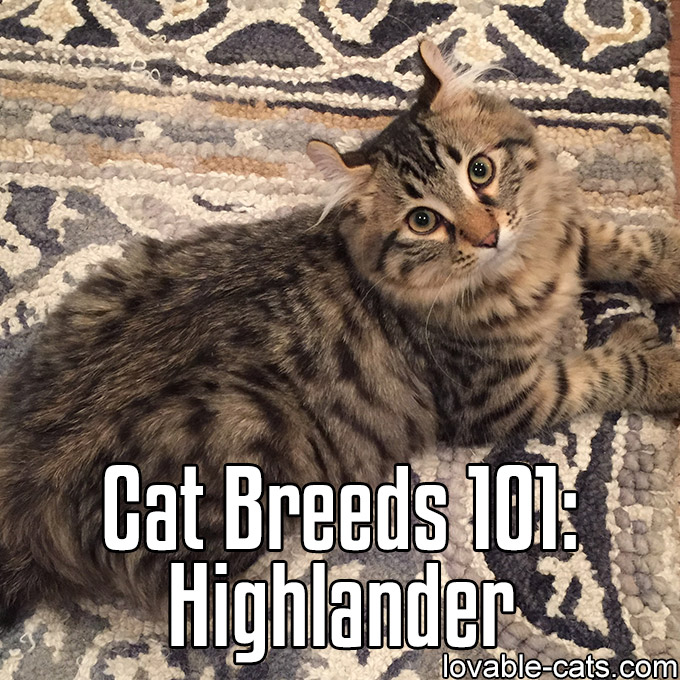
Cat Breeds 101: Highlander – Image To Repin / Share
Photo: Wikipedia – lic. under CC 4.0
More than its fun-loving nature, the Highlander cat breed continues to draw more attention from fanciers because of its loosely curled-back ears. Although they are best noted for their curled back ears, the Highlanders are actually born with straight ears. A few days after birth, the ears begin to curl.
The Highlander breed was developed in 2004 with the intention of creating a domestic feline that possesses a powerful appearance. The roots of the breed can be traced back to the Highland Lynx, which was actually derived from crossing an American Bobtail, Desert Lynx, and American Curl. Eventually, the breed adopted the name Highlanders. In 2008 the breed was granted its competition status by The International Cat Association (TICA).
The breed may come in medium to large size, with females notably smaller than the males. The male Highlanders can weigh more than 20 pounds, while their female counterpart weighs between 10 to 14 pounds. In general, the breed is considered as muscular and athletic in nature. They have rectangular hips that are higher than their shoulders. Also, they have medium-length legs of which the forelegs are shorter than the hind legs.
They are perhaps best distinguished for their wide nose and sloping forehead. Some cats of this breed also have polydactyl claws, which is probably one of their distinguishable features. In fact, some polydactyl cats may have as many as 7 toes on one foot!
The Highlanders also have a wide, inverted, pear shaped head, with full muzzle. Meanwhile, they have a large pair of eyes that are independent of their coat’s color, except for those belonging in the pointed category. The breed’s tail is normally thick and short, with a minimum length of one inch for adult Highlanders. [1] Some tails have curls and kinks, which makes each tail unique. The Highlanders usually wag their tail whenever they feel immense joy, playfulness, or happiness.
The Highlander breed may either be shorthaired or longhaired. They usually have dense, short, and resilient coats of varying texture depending on the color. Meanwhile, the acceptable coat patterns include tabby and pointed.
The breed is known to be people oriented. At home, they tend to greet their owners by the door. They also have the habit of showing off to visitors and strangers. They may be quiet most of the time, but they are definitely the active type of cats. Most of this breed loves human company. [2]
Despite its size, the breed is still noted for its gentle disposition. In fact, they have captured the heart of many fanciers because of their crazy antics. They love being the center of attention most of the time. On the other hand, the breed is noted to be curious and inquisitive in nature.
Furthermore, they are very active cats that love to chase and play all the time. This perhaps helps them in getting a powerful, muscular body. Due to its impressive level of intelligence, it is no wonder that this breed is easily trainable.
References:
[1] https://www.tica.org/members/publications/standards/hg.pdf
[2] https://www.tica.org/public/breeds/hg/intro.php
